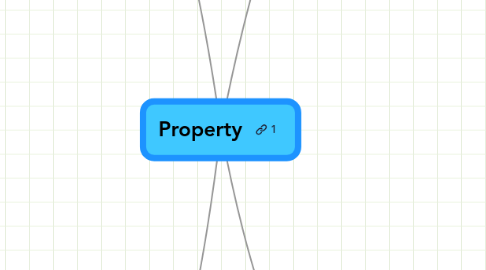
1. Land Use
1.1. Affirmative Entry
1.1.1. Easements
1.1.1.1. Types
1.1.1.1.1. Appurtenant
1.1.1.1.2. In Gross
1.1.1.2. Creation
1.1.1.2.1. Writing
1.1.1.2.2. Implication
1.1.1.2.3. Prescription/AP
1.1.1.2.4. Public Use
1.1.1.3. Scope
1.1.1.4. Termination
1.1.1.4.1. Actions of the Owner of Servient Estate
1.1.1.4.2. Actions of the Owner of Easement
1.1.2. Profit
1.1.3. License
1.2. Dictate Use
1.2.1. Covenant
1.2.2. Servitude
1.2.2.1. Implied Reciprocal Servitude
1.2.3. Termination
1.3. Support Rights
1.3.1. Strict Liability
1.4. Water Rights
1.4.1. Watercourses
1.4.2. Ground/PercolatingWater
1.4.3. Diffuse Surface Water
2. Landlord/Tenant
2.1. Step 1: Determine Types of Tenancies
2.1.1. Tenancy for Years
2.1.2. Periodic Tenancy
2.1.3. Tenancy At-Will
2.1.4. Tenancy at Sufferance (Holdover Tenant)
2.2. Step 2: Determine Type of Dispute
2.2.1. Dispute over Rent
2.2.1.1. Step 1: How much to sue for?
2.2.1.2. Step 2: Does T have Defenses?
2.2.2. Who Must Maintain
2.2.2.1. Implied Warranty of Habitability
2.2.2.2. Tenant must avoid waste
2.2.3. Fight Over Possession
2.2.4. Dispute over Improvements
2.3. Step 3: Determine if Interest Transfered and Its Effects
2.3.1. T transfers to T1
2.3.1.1. Assignee
2.3.1.2. Sublessee
3. Classification of Present and Future Estates
3.1. Present Possessory Interest
3.1.1. Fee
3.1.1.1. Absolute
3.1.1.2. Defeasible
3.1.1.2.1. Determinable
3.1.1.2.2. Subject to Condition Subsequent
3.1.1.2.3. Subject to Executory Interest
3.1.1.3. Tail
3.1.2. Life
3.1.3. Term
3.2. Future Interest
3.2.1. Reversionary Interest
3.2.1.1. Possibility of Reverter
3.2.1.2. Right of Entry / Powers of Termination
3.2.1.3. Reversion
3.2.2. Executory Interest
3.2.3. Remainder
3.2.3.1. Vested Remainder
3.2.3.1.1. Rule of Convenience
3.2.3.2. Contingent Remainder
3.3. Construction Rules
3.3.1. Waste
3.3.2. Rule Against Perpetuities
3.3.2.1. Vest Remainder Subj Open, Exec Int., Cont. Remaind
3.4. Concurrent Estates
3.4.1. Joint Tenancy
3.4.1.1. Title Theory Severs
3.4.2. Tenancy by the Entirety
3.4.3. Tenancy in Common
3.4.3.1. Income and Expenses
4. Competing Claimants
4.1. Adverse Possession
4.1.1. Elements
4.1.1.1. Physical
4.1.1.1.1. Cotenants
4.1.1.2. Mental
4.1.1.3. Time
4.1.2. Scope
4.1.3. Disability
4.2. Equitable Conversion
4.2.1. Buyer has liability
4.3. Marketable Title
4.3.1. Merger Doctrine
4.3.1.1. Present Covenants
4.3.1.2. Future Covenants
4.4. Conveyance by Deed
4.4.1. Valid Deed
4.4.2. Delivery
4.4.3. Acceptance
4.5. Recording Acts & Titles
4.5.1. Types
4.5.1.1. Notice Statute
4.5.1.1.1. Without Notice
4.5.1.1.2. Pays Value
4.5.1.2. Race-Notice Statute
4.5.2. Process of Recording
4.5.2.1. Tract Index
4.5.2.2. Grantor/Grantee Index
4.6. Land Security Devices
4.6.1. Mortgage
4.6.1.1. Remedies
4.6.1.1.1. Creditors Remedy
4.6.1.1.2. Debtors Remedy
4.6.1.2. Transfer
4.6.1.3. Lien/Title Theory Jurisdiction
4.6.1.3.1. Lien Theory - Mortgagee is lien only
4.6.1.3.2. Title Theory - Mortgage is title
4.6.2. Deed of Trust
4.6.3. Land Sale Installment K
